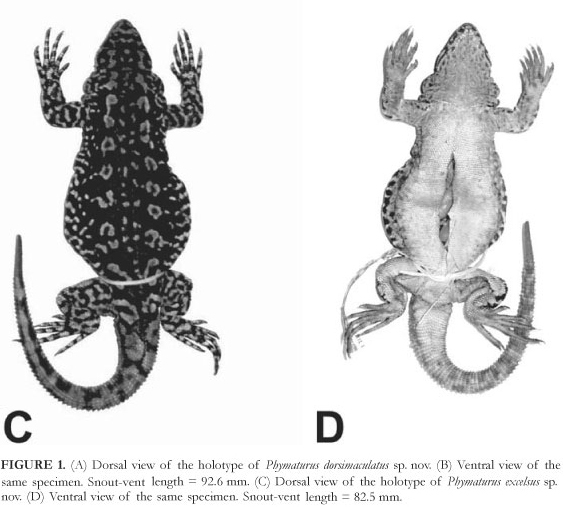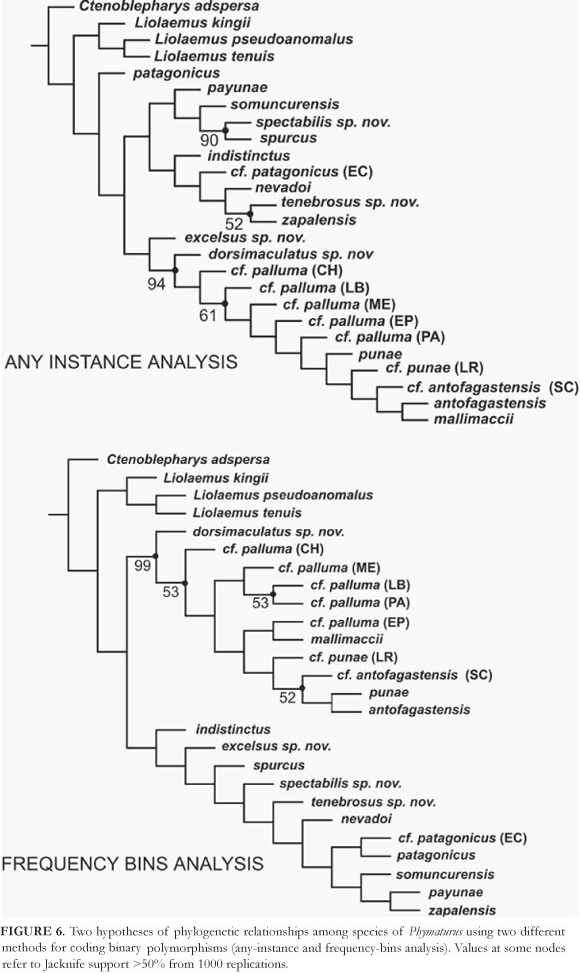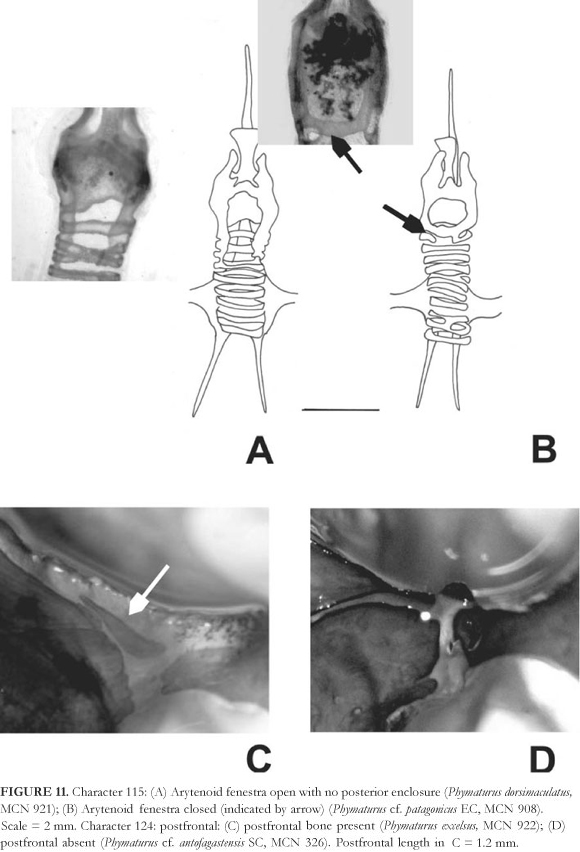Phylogenetic relationships within the liolaemid lizard genus Phymaturus were studied using parsimony analysis of morphological data. The data set includes 133 characters: 28 described in the literature as apomorphies of the three genera of Liolaemidae (Ctenoblepharys, Liolaemus, and Phymaturus), 21 published characters of allozymes and karyology, 53 characters taken from external morphology across all terminals of Phymaturus, and 31 from the skeletal anatomy. This data set includes representatives of 10 of the 12 species currently recognized in the literature plus twelve other terminals considered in this study and representing independent lineages assigned to patagonicus or palluma. Four of these terminals are described in the present study as new species, one belonging to the palluma group and the other three to the patagonicus group. We performed four analyses using different methods of coding binary polymorphic characters, and a new method for treating continuous characters. The traditional division of the genus in two groups is not supported here, with the patagonicus group resulting paraphyletic in some of the analyses. The palluma group is monophyletic and supported by many characters. A majority rule consensus tree of all runs recovers a reasonably well-resolved topology of the group. All analyses recovered a northern subclade within the palluma group, formed by species distributed in Argentina from northern of San Juan province (north to 30 degrees of latitude). In this analysis palluma from El Planchón (Chile) was found to be more closely related to this northern subclade than any other "palluma" form.
Liolaemidae; Phymaturus; new species; morphology; phylogenetic analysis















